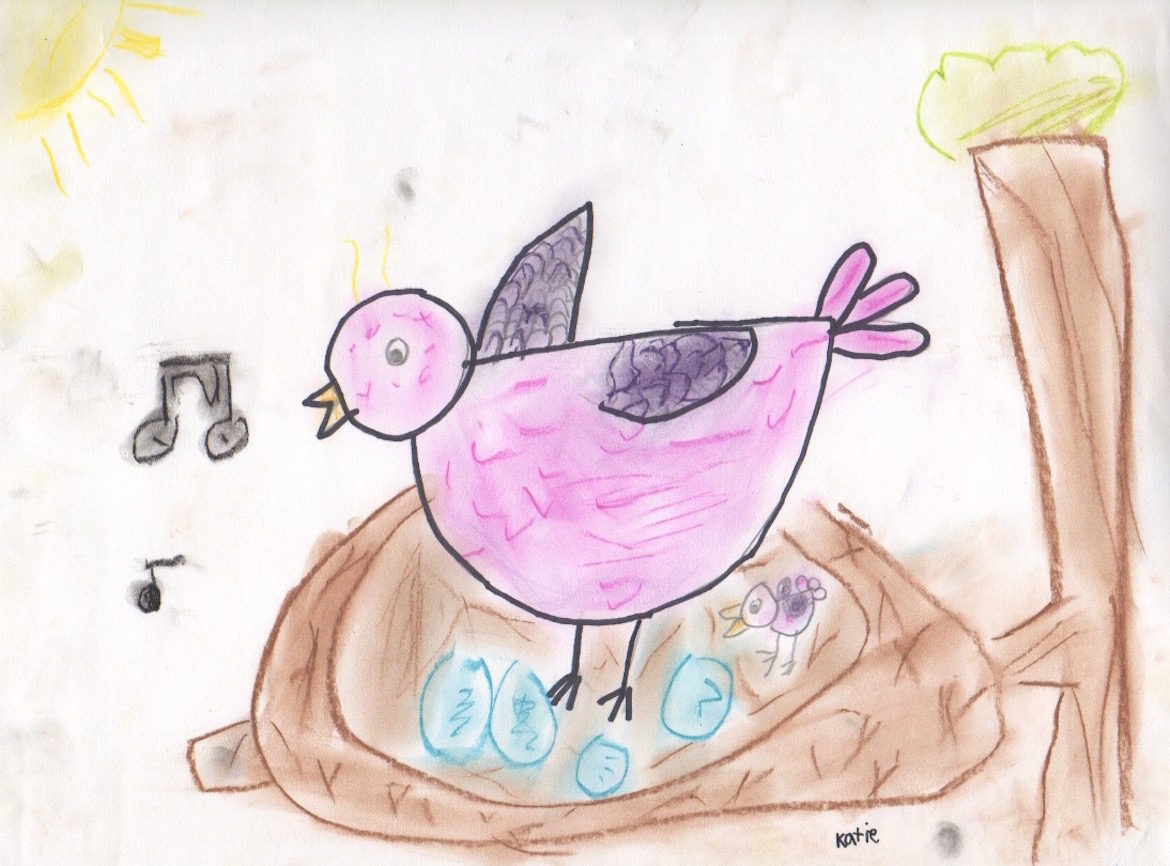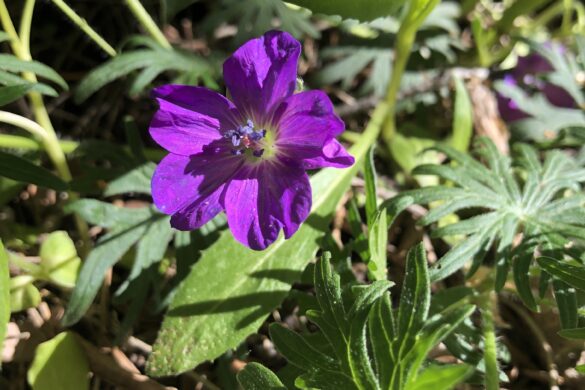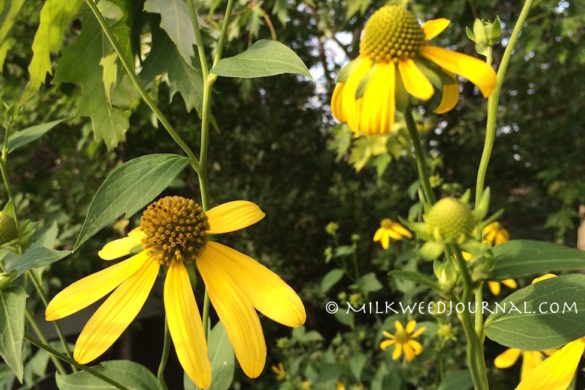It’s a joy to hear the birds singing outside my window as I write this post on a warm June evening. Cardinals, chickadees, various sparrows, mourning doves, robins, grackles and the odd woodpecker frequent our suburban plot of land. Earlier today I saw a heron fly by, high overhead. And I wonder: what would the evening have sounded like to someone here 10 years ago, 20 years ago, or more?
Our home was built in the early-1980s, on a typical rectangular city lot – 50 feet wide by 110 feet long. When we moved here four years ago, my cartwheeling children soon discovered the hard-packed clay beneath the patchy lawn, asking why was the grass so hard compared to the neighbours’ cushiony turf?
Our new backyard was outlined with black chain-link fencing – great for keeping our dog contained but otherwise hard to like. Some kind of deciduous hedge provided cover in the summer along the back fence; euonymus had begun to take over another section. One peony bush, one forsythia, one sedum, a rather forlorn hydrangea tree, some herbs and a sparse patch of rhubarb resided out back. Out front, an overgrown privet hedge guarded the entry, flanked by a spirea bush and some lady’s mantle.
And yet, and yet, this lackluster garden held redeeming features: towering maples in the back and a mountain ash and a honey locust tree for summer shade in front. A red currant bush. An abundance of Virginia creeper climbing up the side of the house. And, thanks to the height of land we sit on, a view over the tops of adjacent houses to a tract of forest and wetlands.
Not much changed outside during that first summer in the whirlwind of moving and renovating inside. Garden-making began — slowly, given the other demands of family and work and life — over the next three summers. In front, the sprawling privet hedge was torn out, replaced with boxwood and yew. In back, screening the fence was a priority: a row of cedars along the sunny side, yews in the shady back, and encouragement to the euonymus making its way along the boundary to the east.
But, faced with a more-or-less blank canvas, a guiding principle was needed. And its genesis was deeply influenced by a book from my parents’ library: National Audubon Society’s The Bird Garden by Stephen W. Kress, “a comprehensive guide to attracting birds to your backyard throughout the year.” The idea of creating a garden that fed, watered and sheltered birds and other creatures made sense to me. And the list of plants that attracted dozens of species of birds was intoxicating.
As a novice gardener, it’s been trial and error, lots of thinking and daydreaming and learning and doing. Our landscape now includes serviceberry, pagoda dogwood and nannyberry trees; trumpet creeper, virgin’s bower clematis and other vines; coneflower, goldenrod, milkweed, black-eyed Susan, bee balm, ferns, bearberry cotoneaster, trillium, wild ginger, bloodroot, Michigan lily, Canada anemone, Joe-pye weed; more dogwoods, ninebark and bunchberry. This year we added a trio of Eastern hemlocks, a couple elderberry and aromatic sumac bushes, and more ferns, trilliums and blazing star. Progress is slow, as time and funds will allow, but the pace is steady and it is our hope that all the small changes begin to add up to something more.
Listening to the birds outside on this evening makes me think of a recent CBC radio interview with Bernie Krause, a “soundscape ecologist” who has recorded the sounds of nature for 50 years. Krause says that fully half of the sounds he has recorded over those years “comes from habitats that are [now] either altogether silent or the biophony [all the sounds that living organisms make collectively in a given habitat] has changed so radically they can no longer be heard in any of its original form.”
To Krause, the sounds of the natural world are “the voice of the divine.” I couldn’t agree more.
The sound of life. The voice of the divine. A song that eases the mind and soothes the soul. May it sing on.
— Stacey
© 2016, Milkweed Journal. All rights reserved. This article is the property of Milkweed Journal. If you would like to use a short excerpt, please provide credit to Milkweed Journal and include a link back to the original post on our site or use the social sharing tools available along the side. Please use our contact form below if you have any questions. Thank you!



